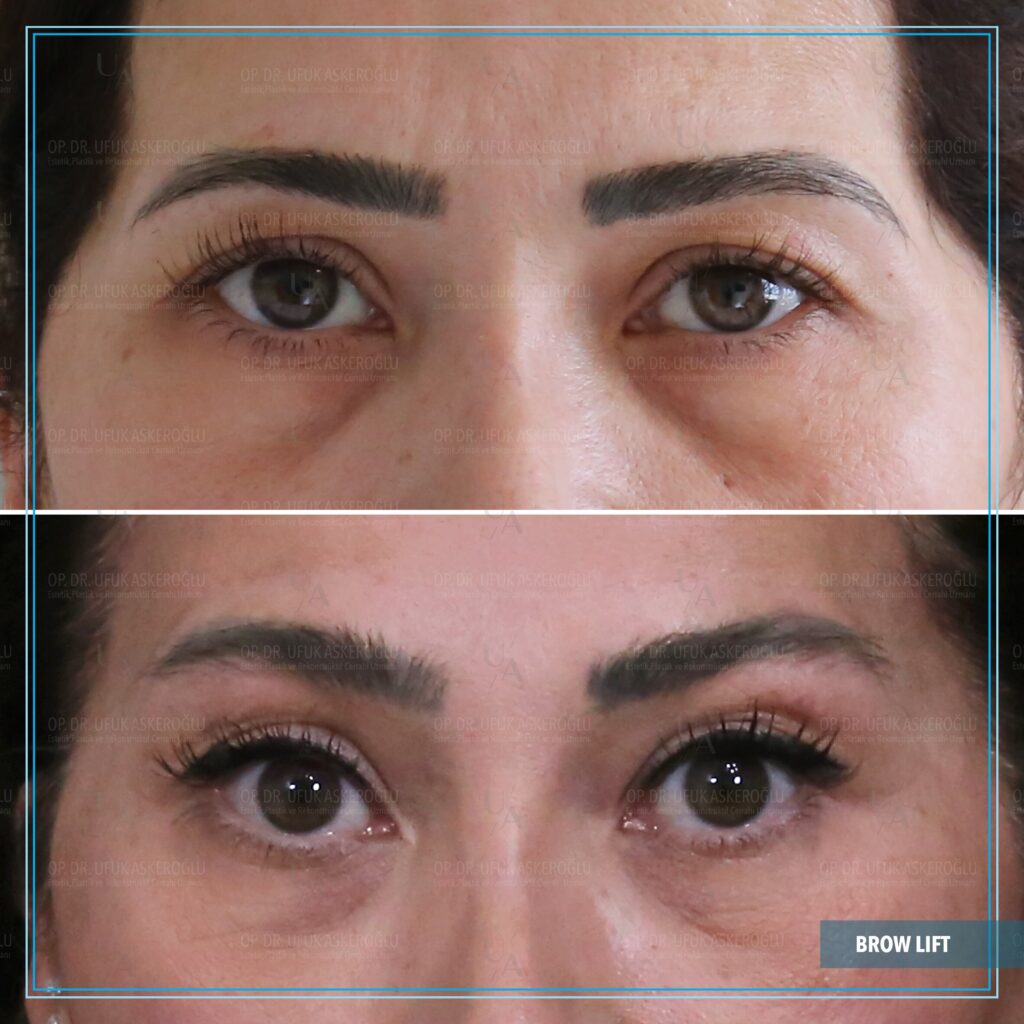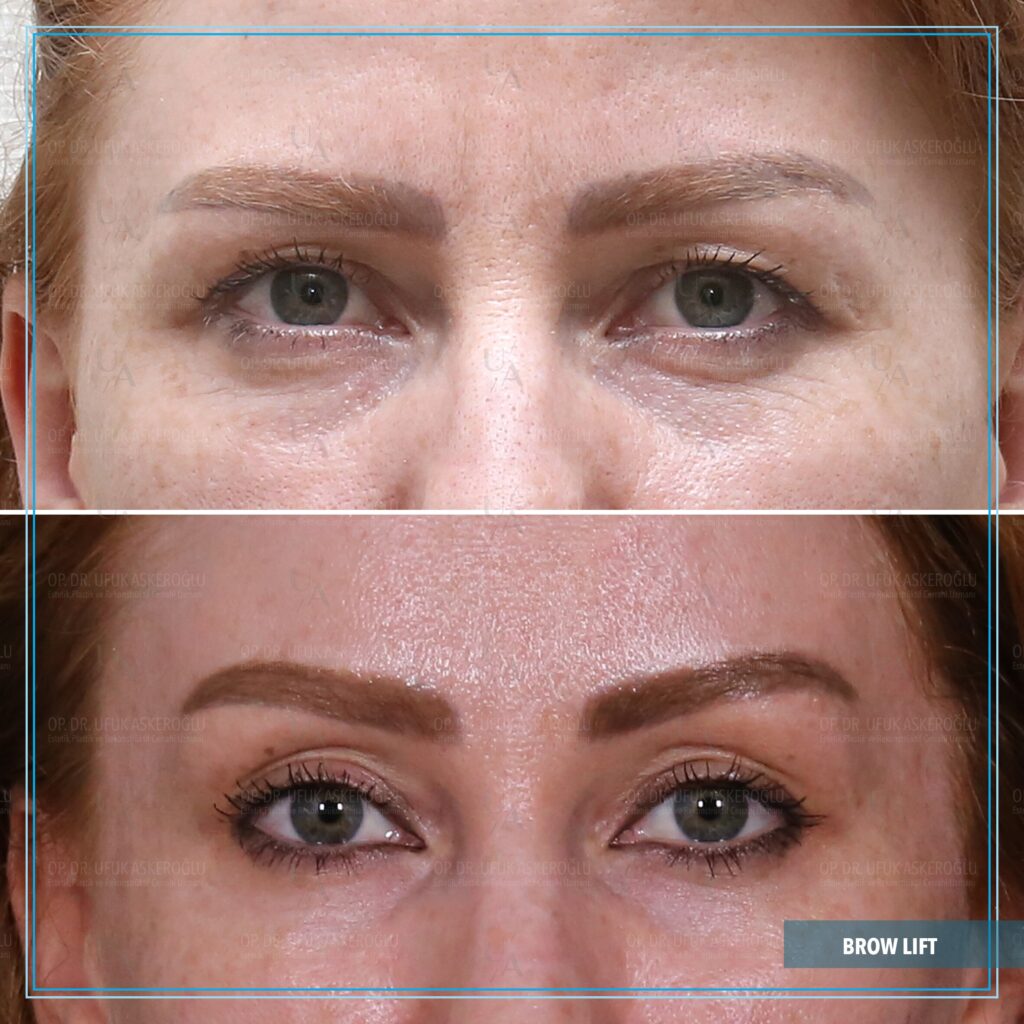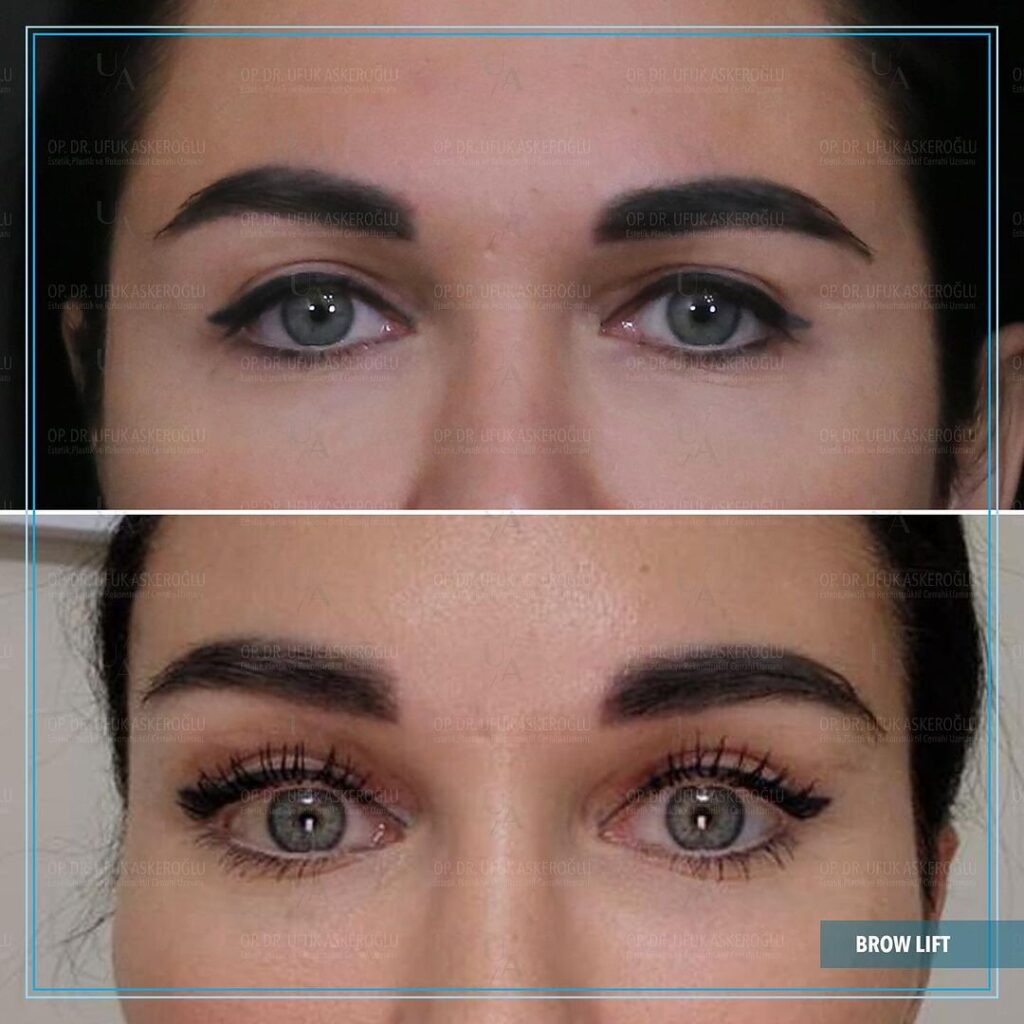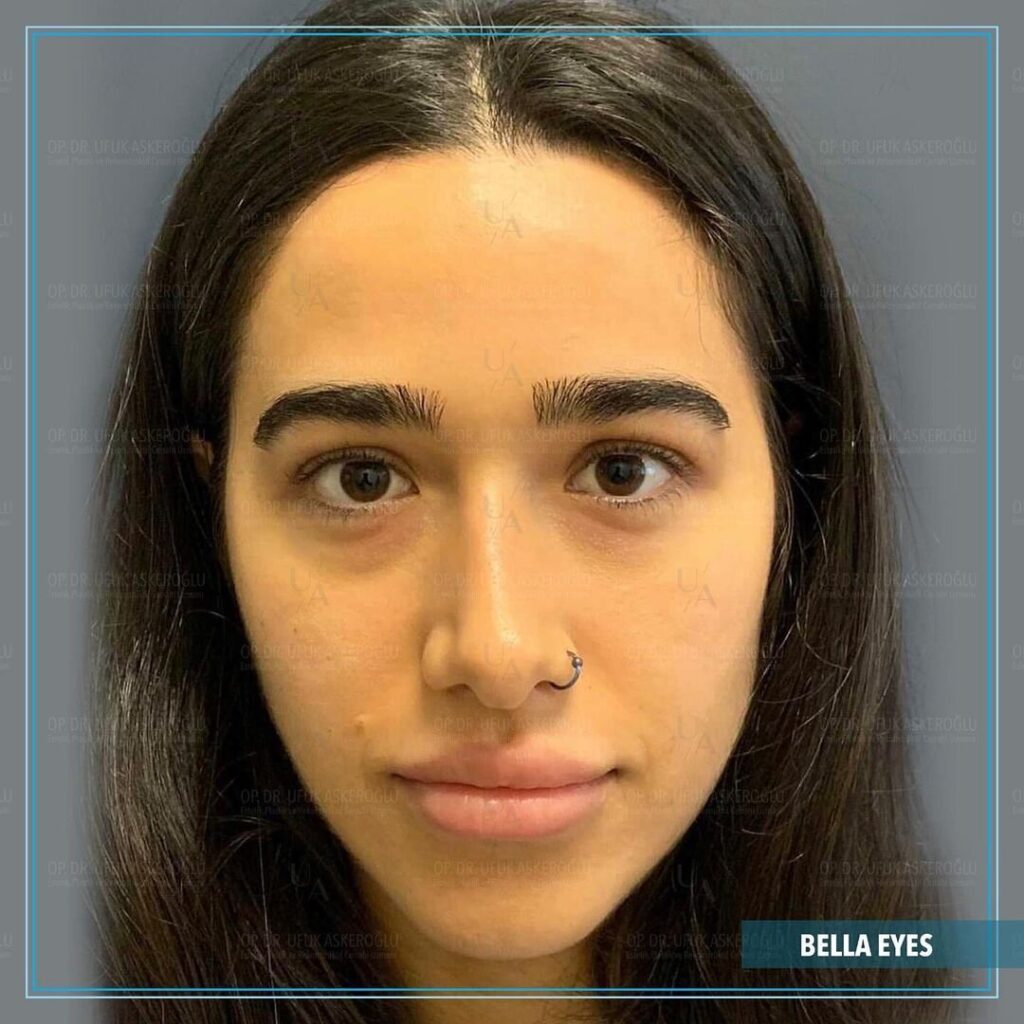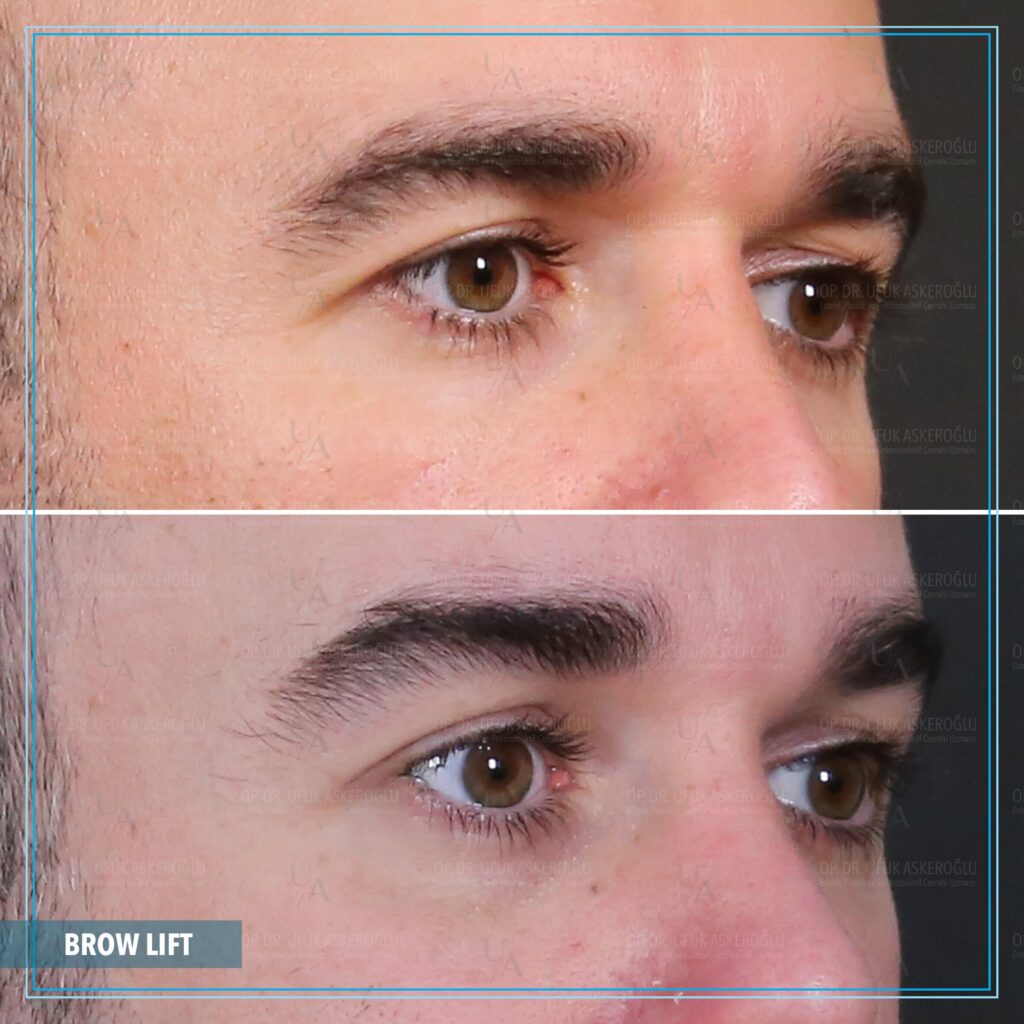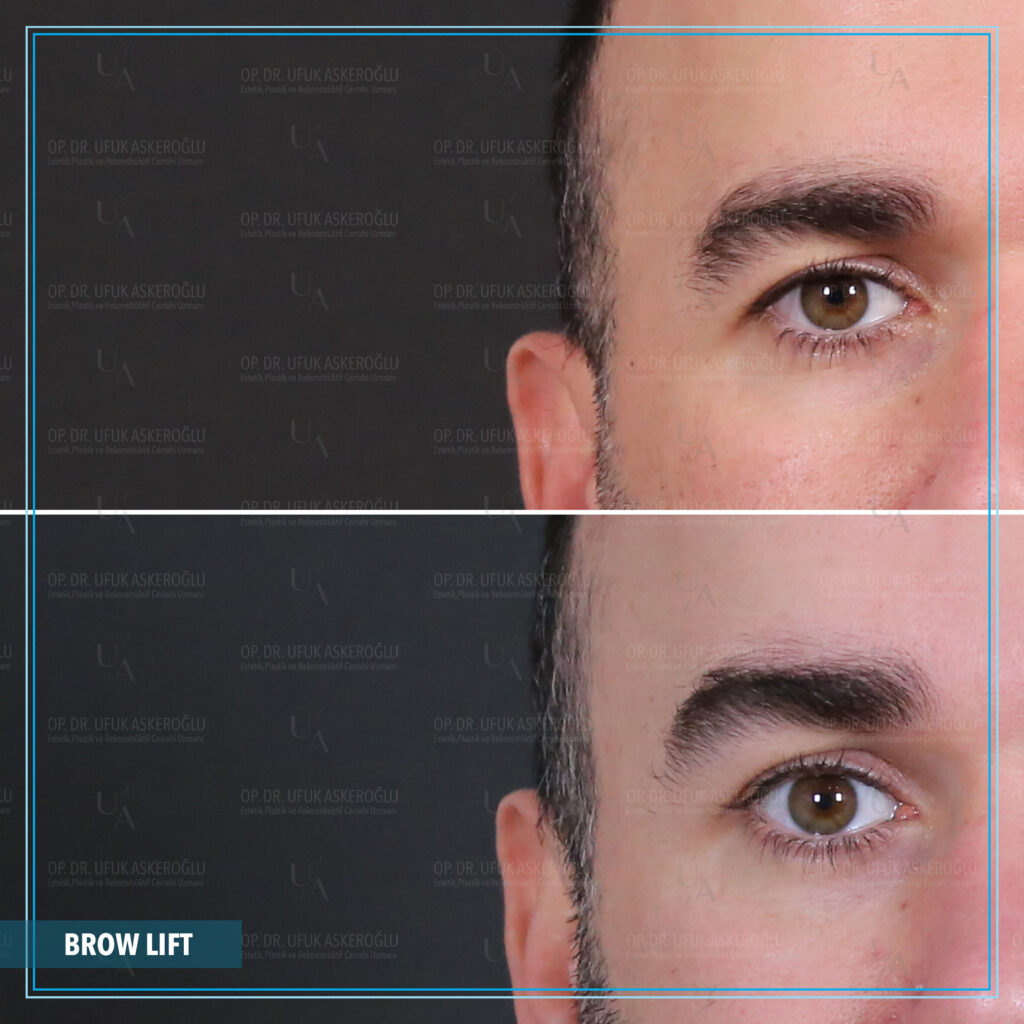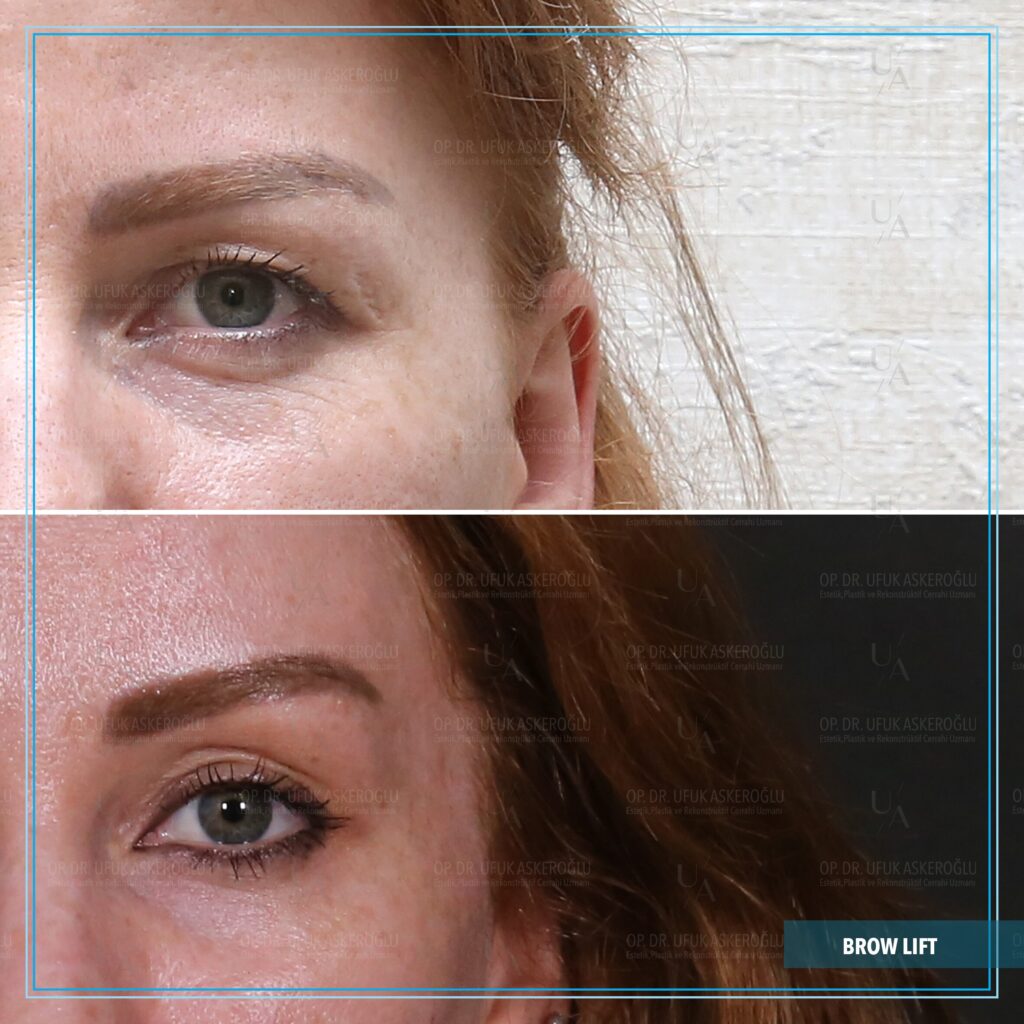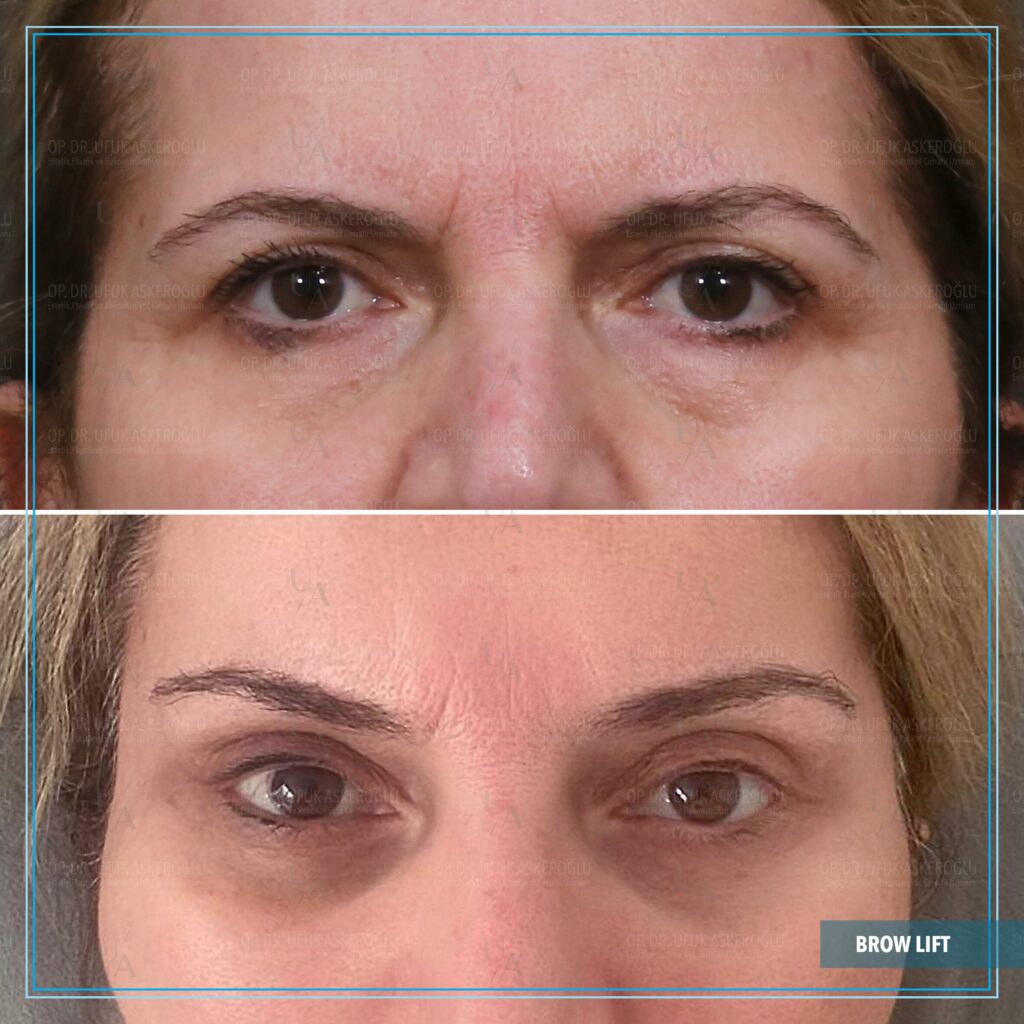
Endoscopic Medial Brow Lift
What is Medial Brow Lift?
A medial brow lift, also known as an endoscopic brow lift or an internal brow lift, is a surgical procedure performed to elevate and rejuvenate the position of the eyebrows. It specifically targets the inner or medial portion of the eyebrows, which is the area closest to the center of the face.
The Technique Behind Medial Brow Lift Surgery
During a medial brow lift, 4 small incisions are made within the hairline, allowing the surgeon to access the underlying tissues and muscles of the forehead. Using an endoscope, a thin tube with a camera and surgical instruments, the surgeon lifts and repositions the brow tissues, tightening any loose or sagging skin.
Goals and Benefits of Medial Brow Lift:
The goal of a medial brow lift is to create a more youthful and refreshed appearance by raising the eyebrows, reducing the appearance of forehead wrinkles and frown lines, and opening up the upper eyelid area. It can help correct a droopy or heavy brow, improve symmetry between the eyebrows, and provide a more rested and alert look.
Medial Brow Lift vs. Traditional Coronial Brow Lift:
A medial brow lift is typically performed under general anesthesia & it is a less invasive alternative to a traditional coronal brow lift, which involves a longer incision across the entire forehead. The recovery period for a medial brow lift is generally shorter, with less scarring and a quicker return to normal activities.
Determining if Medial Brow Lift is Right for You:
It’s important to consult with a Dr.Ufuk Askeroglu’s clinic to determine if a medial brow lift is the right procedure for you. You can contact us to discuss the potential benefits, and create a personalized treatment plan to achieve your desired results.
Who is a Good Candidate For Medial Brow Lift?
Good candidates for a medial brow lift generally exhibit the following characteristics:
Brow ptosis: They have naturally low-lying eyebrows or eyebrows that have descended over time due to aging or genetics.
Forehead wrinkles: They have noticeable forehead wrinkles or frown lines that can be improved by elevating the eyebrows.
Facial asymmetry: They may have asymmetry in the positioning of their eyebrows, with one eyebrow sitting lower than the other.
Overall good health: They are in good physical health and do not have any underlying medical conditions that could increase the risks associated with surgery.
Realistic expectations: They have realistic expectations about the results of the procedure and understand that a brow lift will provide a subtle improvement rather than a drastic transformation.
FAQ
What is the recovery process like after an endoscopic medial brow lift?
The recovery period for an endoscopic medial brow lift is generally shorter compared to a traditional brow lift. There may be some swelling, bruising, and discomfort in the treated area, but these symptoms typically subside within a few weeks. Patients are advised to follow post-operative instructions provided by their surgeon and avoid strenuous activities during the initial healing phase.
How long do the results of a medial brow lift last?
The results of a medial brow lift can vary from person to person, but they are generally long-lasting. The procedure helps to reposition and tighten the brow tissues, creating a more youthful appearance. However, the natural aging process will continue, and factors such as sun exposure and lifestyle choices can affect the longevity of the results. Periodic maintenance treatments may be recommended to maintain the desired outcome.
How long does a medial brow lift procedure usually take?
Generally, the endoscopic medial brow lift surgery takes about 1 & half an hour to complete.
How soon can I wear makeup after a medial brow lift?
The timeline for wearing makeup after a medial brow lift may vary depending on the individual’s healing progress and the specific instructions provided by the surgeon. In general, it is advisable to avoid applying makeup to the incision sites until they are fully healed, which can take approximately 2 to 3 weeks. It is best to follow Dr.Ufuk Askeroglu’s guidance to ensure proper healing and minimize the risk of infection or complications.


